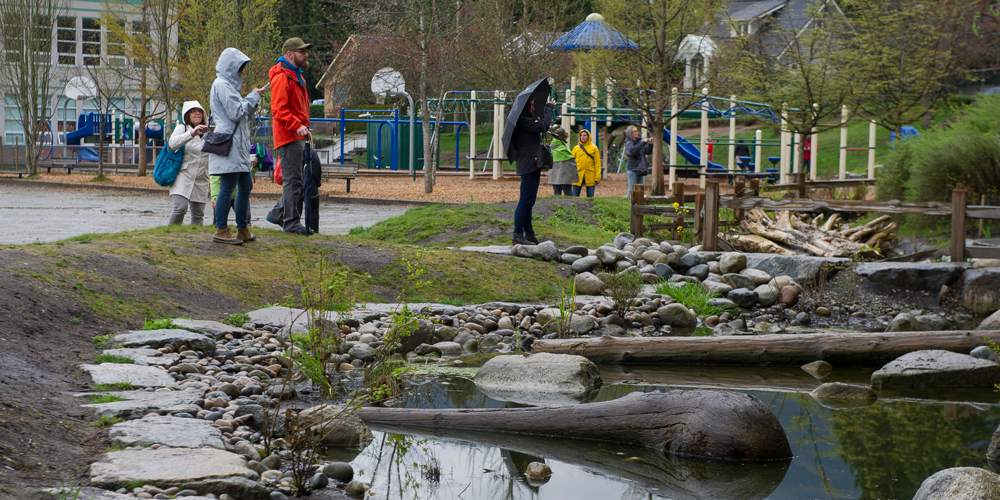In the wake of rising temperatures and climate change challenges, schools across the United States are turning to the great outdoors to reimagine their playgrounds and outdoor spaces. Departing from traditional asphalt-covered yards, a movement is underway to infuse nature into school environments, offering children a unique and refreshing approach to play and learning.
At Colene Hoose Elementary School in Normal, Illinois, a groundbreaking transformation has taken place. The school’s new playground, designed by Bienenstock Natural Playgrounds, boasts a landscape filled with natural elements like trees, prairie grass, and boulders. Unlike conventional playgrounds, every corner of this space is intentionally crafted to spark children’s imagination and engagement.
The shift towards greener schoolyards isn’t limited to Normal. Communities in Los Angeles, New York City, and beyond are joining the movement, recognizing the urgent need to create resilient outdoor spaces that combat the effects of climate change. Instead of harsh materials like blacktop and rubber, schools are opting for trees, rocks, and structures made from natural materials like wood and rope.
The motivation behind this shift goes beyond combating heat. Research indicates that exposure to nature can significantly benefit children’s well-being, from reducing stress levels to enhancing cognitive function. Despite these benefits, the majority of public schoolyards in the US lack green spaces, highlighting the need for widespread transformation.
Teachers like Chris Weiss from Stephen A. Halsey Junior High in New York City are witnessing firsthand the transformative power of nature-based projects. By allowing students to immerse themselves in outdoor activities like gardening, Weiss has seen remarkable changes in their attitudes and academic performance.
However, the push for greener schoolyards also acknowledges the challenges posed by a changing climate. Extreme heat can make outdoor activities uncomfortable and even dangerous for students. To address this, innovative design approaches using materials like wood and strategic tree planting are being implemented to mitigate heat islands and create cooler, more comfortable environments.
Projects like the California Schoolyard Forest System aim to set a precedent for nature-based learning environments across the country. By setting ambitious goals for canopy cover and securing funding for green infrastructure improvements, initiatives like these are paving the way for a greener future in education.
While financial constraints remain a challenge for many schools, efforts are underway to secure funding and support at the federal level. Legislation such as the Living Schoolyards Act proposed by Senator Martin Heinrich aims to provide resources for schools nationwide to revamp their outdoor spaces, emphasizing the importance of nature-rich environments for children’s development.
The hope is that initiatives like the Colene Hoose project will serve as inspiration for other schools to follow suit. By embracing nature and rethinking outdoor spaces, schools can not only provide children with healthier and more engaging environments but also foster a deeper connection to the natural world as they grow into responsible stewards of the planet.

